READY TO GET STARTED?
REQUEST A FREE ESTIMATE
Fill out the form below or call (888) 466-7849 for a free, no-obligation estimate.
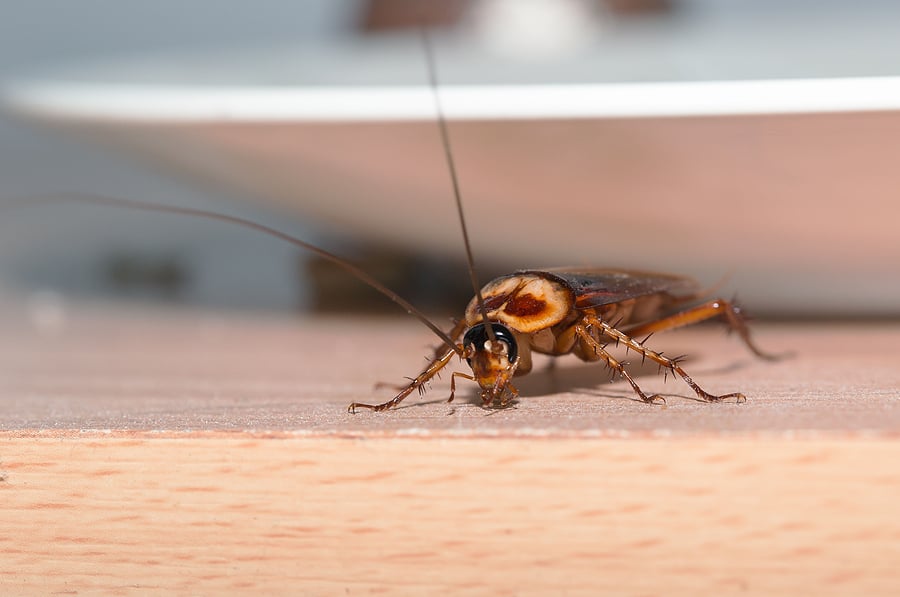
Some pests hibernate when the weather gets colder, while others seek out warmth inside of our homes. These overwintering pests will sneak through any open crevice or gap from the exterior of your home and can stay there all winter long undetected. Here are a few crawly pests that could be hiding out in your house!
German Cockroaches
The German cockroach is a common roach species found throughout the world. These roaches range from 1/2 to 5/8 inches and are brown with two-longitudinal stripes running down the thorax. They prefer to live in smaller areas close to food and moisture, such as inside pantries, basements, and bathrooms. Roaches are dangerous as they can contaminate food sources, spreading bacteria and human pathogens by leaving their fecal matter and other debris in and around food and food preparation areas.
To prevent cockroaches, make sure you keep your kitchen counters clean and free of crumbs. Vacuum frequently and always dispose of the garbage regularly. Look out for any leaks in the kitchen and bathrooms, as this moisture will attract roaches.
Brown Recluse Spider
Measuring the size of a quarter, the brown recluse spider can exist in large numbers. These spiders have six eyes arranged in three pairs, which is quite different from other species of spiders that have eight eyes arranged in two rows. The brown recluse prefers to live in dark areas such as under furniture, in wall voids, basements, crawl spaces, and in closets. While these spiders typically spin their webs in darker places, they can also found in cardboard boxes, along window molding, and even in shoes. The brown recluse can be dangerous to humans, as they will bite and inject venom if disturbed or threatened.
To prevent these spiders from entering your home, keep the trees and shrubs trimmed away from the house and roof. Repair any loose siding or shingles as they can easily sneak in through any gaps and openings. Consider installing a mesh cover or cap over chimneys to prevent entry.
Bed Bugs
Bed bugs are 3/16” to 1/4” in length or about the size of an apple seed or a pencil eraser. They are long and brown, flat in shape with an oval-shaped body, and brown in color. These pests enjoy harboring in cracks and crevices during the day and will come out at night to feed. You will typically find them in beds, mattresses, box springs, rails, headboards, and footboards. Bed bugs will bite humans on areas of skin that are exposed during sleep. Bed bugs are also notorious for hitchhiking from place to place through luggage, following you back home after traveling.
To prevent bed bugs, routinely check linens, mattresses, and even pet beds for live bugs. Thoroughly inspect any used furniture before bringing it inside your home. If you have recently travelled, inspect your luggage before bringing it inside your home, immediately take your clothes out and wash them in hot water, and dry them on high heat.
If you suspect that you have any of these pests inside your home, consider reaching out to your local pest control company where they can help identify, inspect, and provide a prevention plan.
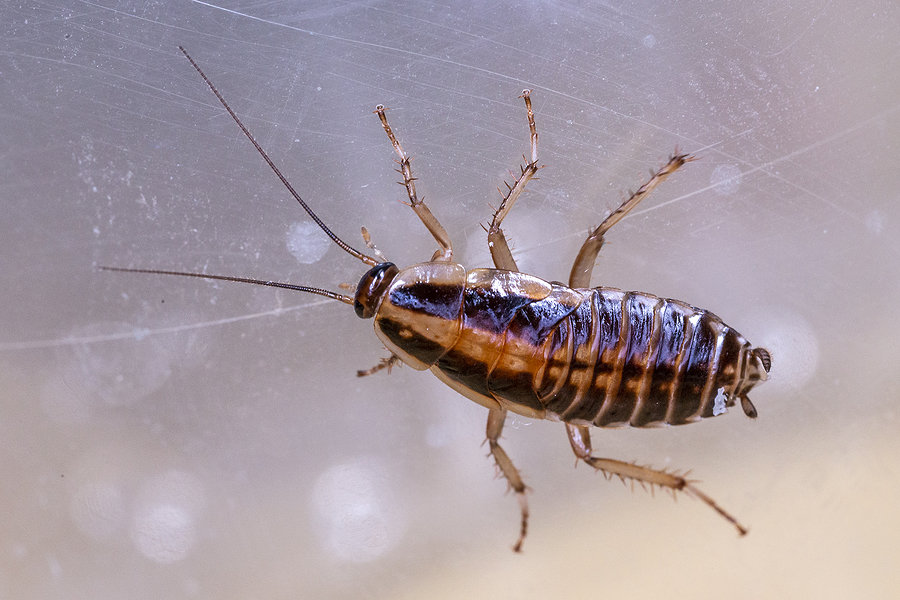
German roaches are the most common species of cockroach worldwide. They can be found infesting just about anywhere that humans occupy. How do you know if you have German cockroaches? What do they look like? Are these roaches dangerous to humans? Get the answers to these questions and more with our 411 on German cockroaches.
German roaches are flat and oval-shaped with 6 legs and a pair of antennae. They are smaller than other species of cockroaches, measuring between 1/2″ and 5/8″ in length. They are light brown to tan in color with 2 dark parallel stripes on their backs, just behind their heads. Females are darker than males. This species has wings but rarely fly; they prefer to run instead.
German cockroaches are an indoor pest, preferring warm, humid environments. They prefer temperatures between 85 and 95 degrees Fahrenheit with 90 to 95% humidity. They make their way indoors by hitchhiking on grocery bags, cardboard boxes, and used appliances. They are often found above refrigerators or other heat producing appliances, under sinks, and around water pipes in kitchens and bathrooms so they can be near food and water sources. They are found throughout the United States.
German roaches will eat almost anything. This includes soap, glue, toothpaste, food crumbs, and bindings of books.
German cockroaches have been linked to disease transmission in humans. As they crawl across fecal matter and other areas, they pick up germs on the spines of their legs and then transfer them to food and other surfaces. It has been proven that German cockroaches spread 33 different bacteria, 6 parasitic worms, and 7 other human pathogens. Their saliva, droppings, and even their dead bodies have proteins that can trigger allergies and increase asthma symptoms, especially in children.
If you spot one German roach in your home, it is highly likely that there are many more hiding in cracks and crevices. Females can lay up to 40 eggs at a time which then mature within about 2 months. The female carries the egg case for up to a month and drops it right before it hatches. They can breed up to 6 generations per year. Adult German roaches can live up to 200 days. This quick reproductive rate combined with their lack of natural predators makes a German cockroach infestation difficult to control.
German cockroaches aggregate in groups when they infest your home. You are likely to find their droppings in areas that they frequent. These droppings appear as small, dark, pepper-like material that is often found on counters and in drawers. Their feces can also stain, leaving dark spots and smears in the corners of rooms, along the tops of doors, and around small cracks and openings in walls. When these roaches infest in large numbers, they can also give off a mild, musty odor.
The first step in preventing a german cockroach infestation is practicing good hygiene. Keep your kitchen and bathroom clean, cleaning up crumbs and spills quickly. Sweep, mop, and vacuum often. Don’t leave any dirty dishes in the sink. Don’t leave pet food and water bowls out overnight. Seal all the openings in the exterior of your home, especially around utility pipes. Ventilate or consider enclosing your crawlspace.
If you suspect you have a cockroach infestation of any species, contact a professional pest control company who can provide you with an in-depth inspection and set you up with an appropriate treatment and prevention plan.
What You Can Expect from Lawn Care Service
What You Need to Know About Millipede Control
Watch out for the Stinging Pests!
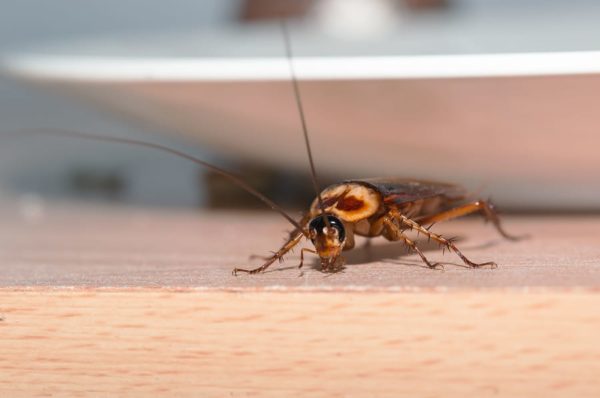
Cockroaches have been around for over 300 million years – even longer than the dinosaurs! These pests are resilient and adaptive with odd behaviors and survival tactics which have helped them survive for so long. While most homeowners are aware of the health risks associated with roaches, including allergies, asthma, and the spread of germs and bacteria, there are lots of interesting facts about cockroaches you might not realize. Here are 7 things you might not know about cockroaches.
Cockroaches are one of the most highly adaptable pests on earth which makes them extremely difficult to control or eliminate. To prevent cockroaches keep food sealed and stored properly; clean your kitchen daily; don’t leave food or pet food out overnight; dispose of garbage regularly and use cans with sealing and locking lids; identify any small cracks or holes around your home and seal them; and make sure basements and crawlspaces are kept dry and well ventilated. If you suspect you have a cockroach infestation, contact a professional pest control company who can provide you with a thorough evaluation and appropriate treatment and prevention plan.
How Much Does A Mosquito Treatment Cost?
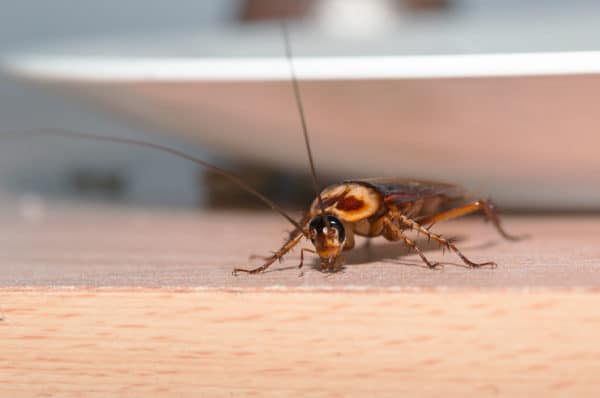
When cockroaches are spotted in your home several questions may run through your mind. The first one is most likely “Oh no,what do I do?” followed closely by “How do I get rid of them?” Once you get over the shock of having one scurry across your floor or countertop, several more questions may come to mind.
What attracts cockroaches? Cockroaches aren’t just attracted to dirty or cluttered houses. Roaches will come indoors in search of 4 things – food, water, heat, and shelter. While dirty or cluttered houses can provide an ample supply of food and shelter, clean houses can provide many of these necessities for roaches, as well. Appliances offer a source of heat so roaches are often found under or behind them. Leaky faucets or pipes can provide a water supply no matter how clean your home is.
Are cockroaches dangerous? The answer to this is a resounding yes. Cockroaches are known to carry bacteria that can cause illnesses in humans, such as salmonella, when it is deposited on your food or food prep surfaces. Roach excrement, shed body parts, eggs, and even saliva have been proven to trigger allergic reactions and asthma in affected people.
What do cockroaches look like? You may wonder why this is important. After all, a cockroach is a cockroach, right? Different species of cockroaches have different habits and require different treatments to completely eliminate a roach infestation from your home. While there are many different species of cockroaches worldwide, there are a few that are common to Georgia. Here’s how to identify each of them to help ensure you get the proper treatment.
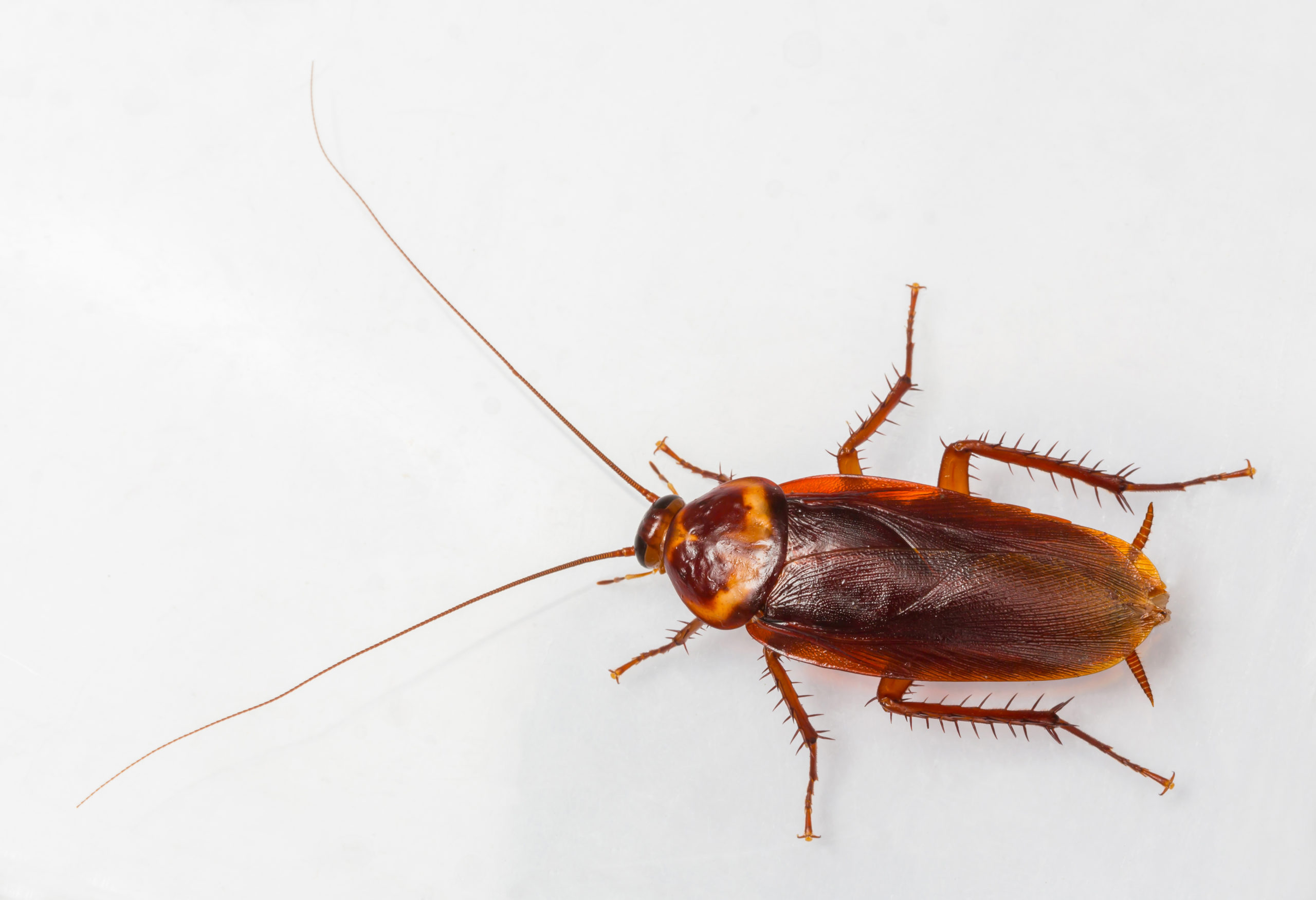
The American cockroach is the largest and most common cockroach found in homes in Georgia. These roaches are a chestnut to light brown color with light yellow bands around the shield behind their heads. They are large with adults approximately 2 inches in length. Male and female American cockroaches have wings and they are capable of flying short distances. This species can live up to 2 years. They are active at night and are often found around water sources like pipes, sewers, and basements. They are also commonly found in kitchens and bathrooms. They often cohabitate with smokybrown and Oriental cockroaches.
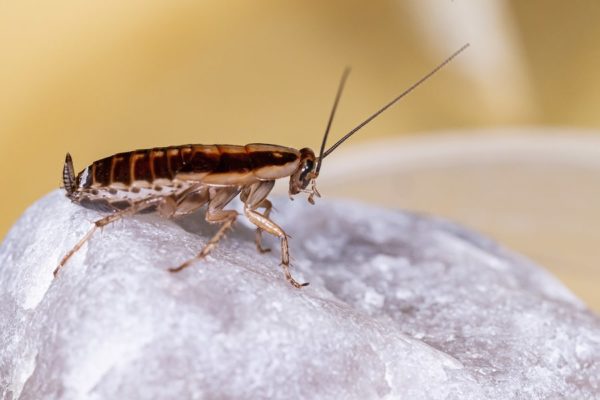
The German cockroach is another easily recognizable cockroach in Georgia. These roaches are tan with dark brown parallel stripes on the back of their upper thorax. They are smaller than their American counterparts with adults measuring about 1/2″ to 5/8″. German roaches can live up to 12 months. This species is also active at night and are often found in kitchens near food and heat supplies from appliances. They also produce more eggs than any other species.
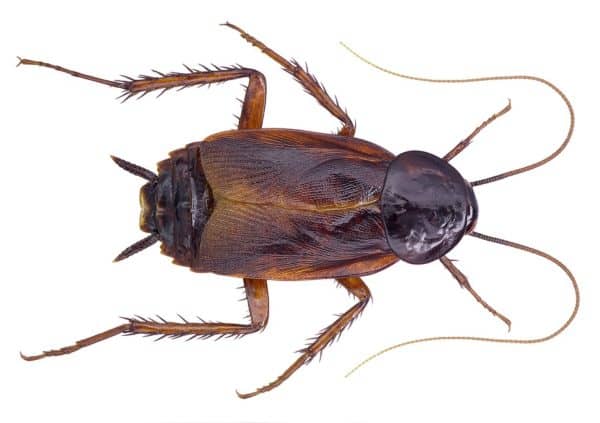
The Oriental cockroach is another common species in Georgia. They are glossy with cherry to black coloring. They are large with adults measuring 1 to 1.25 inches in length. Males have short wings but females are wingless. These roaches can live up to 6 months. Although they often cohabitate with American cockroaches, they are not usually found indoors. Instead they are found outdoors where they feed primarily on decaying matter. They are active at night and have habits similar to their smokybrown cousins.

The Asian cockroach is tan with double parallel strips on their backs. They are often mistaken for German cockroaches. They are a smaller species with adults measuring 1/2″ to 5/8″. These roaches are also found outdoors usually under mulch, leaf litter, or high grass. They usually only come indoors when their outdoor habitat is disturbed. These roaches can fly and are attracted to light.
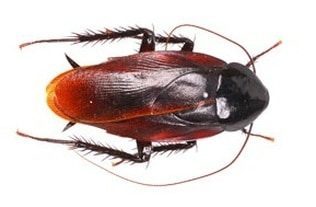
The smokybrown cockroach is dark cherry or red in color. They are large with adults around 1.5 inches in length. They prefer habitats in Southern neighborhoods with mature hardwood trees because they require high humidity and protection from the wind in their shelter. They can often be found in tree holes, attics, crawlspaces, and sheds. They are active at night.
Although you can take some preventative measures to keep roaches out of your home like tidying up, keeping kitchens and bathrooms clean, fixing leaks, and sealing cracks and crevices, they are resilient pests and can often be difficult to eliminate. Contact a professional pest control company who can help properly identify the type of roach(es) you are dealing with, locate points of entry and food and water sources, and effectively and safely eliminate them from in and around your home.
Crane Flies – Are Those Giant Mosquitoes?!
Digger Bee Mounds vs Fire Ant Mounds
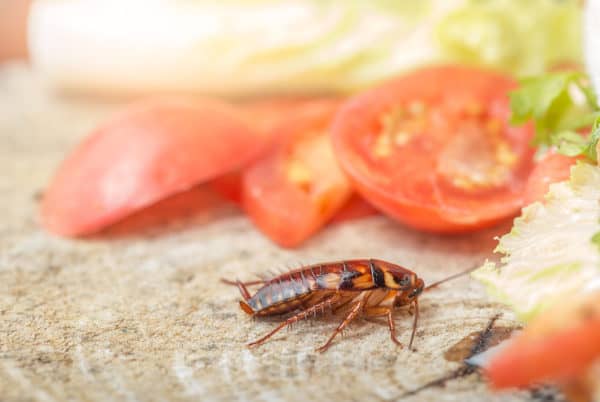
There are thousands of species of cockroaches in the world but only a handful are found in the United States. The most common species found in the US include the German cockroach, the American cockroach, the brown-banded cockroach, and the Oriental cockroach. While there are significant differences between these four species, there are some common features that are shared between ALL species of cockroaches. All roaches have flattened, oval-shaped bodies with antennae on their heads. They all move surprisingly fast and they all present a health risk for households. Roaches are known to spread more than 30 types of bacteria and even parasitic worms. One can find all of these species of cockroaches in the house. However, each species has its own characteristics and can be found in different parts of the home – making treatment methods vary from type to type. Let’s take a look at the different types of cockroaches and some ways to prevent them.
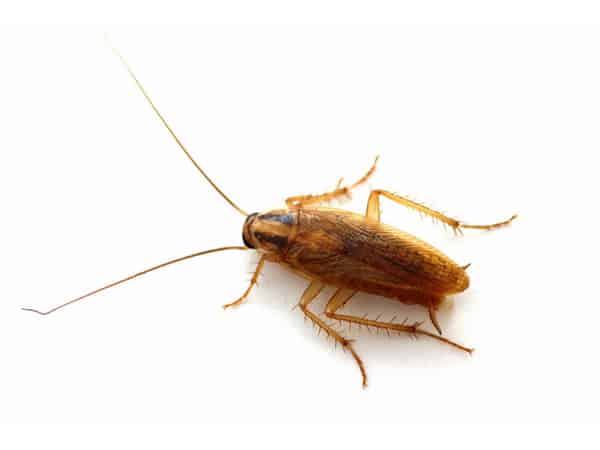
The German cockroach, also known as Blattella germanica, is a smaller species of cockroach, usually only growing to about 5/8″ in length. They are usually pale brown or caramel colored with two dark brown stripes behind their heads. They have wings but do not fly. German cockroaches are found across the United States and prefer warm, moisture-rich habitats. They are often found near dishwashers, sinks, and stoves and are mostly found in kitchens and bathrooms. German cockroaches can live up to 12 months and produce more eggs than any other cockroach species. They eat a wide variety of things but prefer meat, grease, and starchy foods. They are notoriously responsible for outbreaks of illness and triggering allergic reactions in humans. Their small size allows them better hiding capabilities making them harder to get rid of.
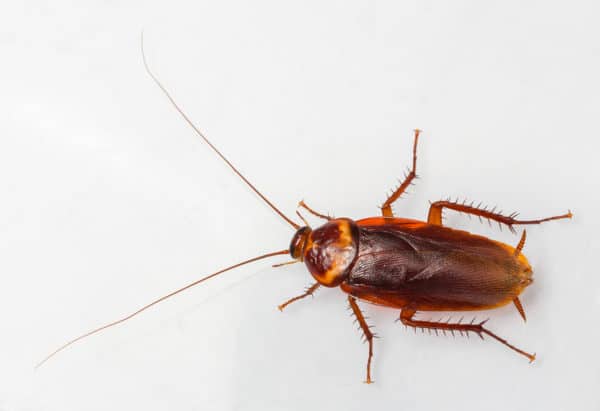
The American cockroach, also known as Periplaneta americana, is one of the largest cockroaches found in homes. American cockroaches grow up to 1-1/2″ in length. They are reddish-brown or brown in color and have light yellow bands around the shield behind their heads. American cockroaches have wings and can fly short distances. They are found throughout the United States and are often found in warm, dark areas like basements, crawlspaces, bathtubs, drains, and sewers. They are also common in households where food is stored. They will eat everything from plant material to garbage and contaminate any surfaces they walk across. American cockroaches can live up to 2 years. They are active when the temperature is 70 degrees or higher but have also adapted to survive at much lower temperatures with the right conditions.
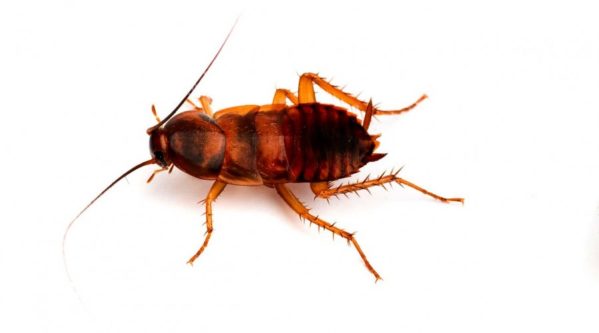
The brown-banded cockroach, also known as Supella longipalpa, is a smaller species of cockroach found throughout the United States. Brown-banded cockroaches are distinguished by 2 light yellow to brown bands across their bodies. Males have larger, dark brown wings that lighten in color as they extend to the tips. Females have smaller, reddish-brown to dark brown wings. Even though they both have wings, only males can fly. Brown-banded cockroaches like warm, dry environments that are higher than other species. They are often found in upper cabinets, behind pictures hanging on the walls, or in the hollow parts of furniture. In fact, they will often hide their egg casings in or under furniture. They will also gather near larger appliances like refrigerators and TVs because of the heat they give off. These cockroaches are often found in offices, apartments, kitchens, and hospitals. Brown-banded cockroaches prefer starchy foods like glue from envelopes and stamps and also paper products. They can live from 3 months up to 1 year and will jump when they have been disturbed.
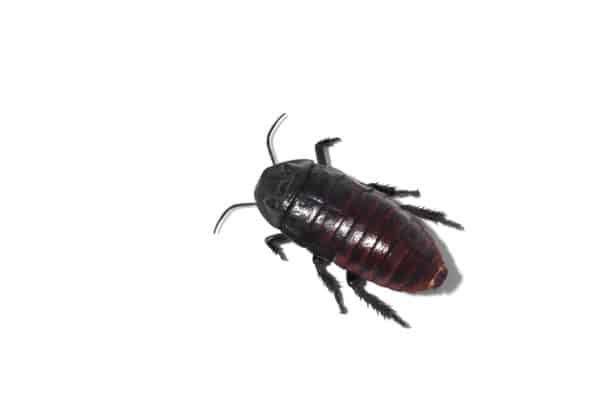
The Oriental cockroach, also known as Blatta orientalis, “water bugs,” and “black beetles,” has a glossy appearance that is dark brown or black in color. Oriental cockroaches can grow up to 1-1/4″ in length. These cockroaches cannot fly and are not as fast as other species. They prefer cool, dark, damp environments and are often found in basements, sewers, drains, and near woodpiles. They commonly enter homes through drains in search of food. Unfortunately they cannot climb smooth vertical surfaces and are often found stuck inside sinks and tubs. They primarily feed on decaying organic matter. Oriental cockroaches have a 6 month life span and give off a strong smell. They are considered one of the dirtiest species of cockroaches.
Seeing one or two cockroaches in the house usually means there are several more hidden out of sight. They are much more difficult to get rid of once a roach infestation is established. There are some steps you can take to help prevent roaches from taking over:
If you suspect you have a roach problem, contact a licensed pest control company. Professional pest control technicians can provide expert advice and thoroughly assess your home to help identify not only the type of cockroaches you have but also the most up-to-date treatment options and prevention techniques.
Mosquito Season: When Will It End?
How Much Damage Can Termites Really Cause?
Helpful Tips to Keep Wildlife our of Your Home